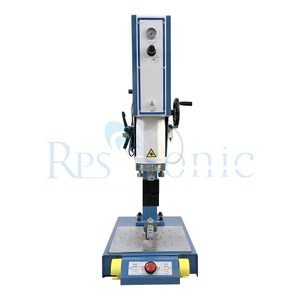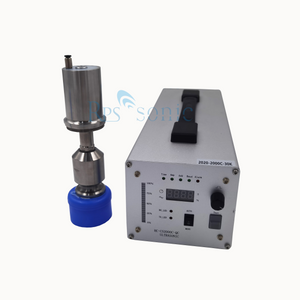Application of Ultrasonic Welding Technology in Medical Supplies
Ultrasonic welding technology is a crucial and widely used technique in medical device manufacturing. Its unique advantages, including high efficiency, cleanliness, and reliability, make it the preferred process for producing high-end, sterile, and disposable medical products.
The following is a detailed analysis of the application of ultrasonic welding technology in medical devices:
I. Core Technology Principles and Advantages
Principle: High-frequency (typically 15kHz to 40kHz) mechanical vibration is transmitted through a welding head to the contact surfaces of two thermoplastic or nonwoven fabrics. Under the combined action of pressure and vibration, intense friction occurs between the molecules at the contact surfaces, generating sufficient heat instantaneously (usually within 0.1-1 second) to locally melt the materials. This heat then cools and solidifies under pressure, forming a strong weld at the molecular level.
Advantages compared to other joining technologies (such as adhesives, solvent bonding, and mechanical joining):
· Clean and pollution-free: No adhesives, solvents, or auxiliary materials are required, avoiding the risk of chemical contamination and meeting the stringent biocompatibility requirements of medical products.
· High efficiency and energy saving: The welding process is typically completed within 1 second, consuming extremely low energy, making it ideal for large-scale automated production.
• Strong and Sealed Welds: The resulting airtight and watertight seals effectively prevent liquid penetration and bacterial intrusion, crucial for aseptic barrier packaging and liquid delivery devices.
• Precise and Controllable: The welding process is controlled by precision equipment, concentrating energy in the welding area, minimizing the thermal impact on surrounding materials and avoiding damage to internal precision components or medications.
• Aesthetically Pleasing: The welds are clean and aesthetically pleasing, without excess adhesive or obvious traces.
• High Degree of Automation and Integration: Easily integrated into automated production lines, ensuring production consistency and traceability.
II. Main Application Areas and Specific Products
Ultrasonic welding applications in the medical field mainly fall into the following categories:
1. Medical Devices and Equipment
Liquid Delivery Systems:
• Infusion Sets, Blood Transfusion Sets: Welding components such as drip chambers, flow regulators, tubing, and connectors together to ensure leak-free connections.
• Catheters, Drainage Tubes: Welding catheter connectors, three-way valves, etc., ensuring the sealing and strength of connections.
Filter Components:
• Blood Filters, Breathing Filters: Welding the outer shell of the filter membrane to ensure its complete sealing and reliable function.
Diagnostic and Testing Equipment Components:
· In Vitro Diagnostic (IVD) Reagent Kits: Welding the cover and substrate of microfluidic chips to form precise microchannels and reaction chambers. This is a typical application of ultrasonic welding in high-end medical fields.
· Aspiration Tips, Test Tube Racks: Rapid production of laboratory plastic consumables.
Implantable Medical Devices: Used for welding the shells or components of some inactive implants made of thermoplastic plastics, but requiring extremely rigorous validation to ensure their long-term reliability.
2. Medical Packaging
This is the largest and most classic application area for ultrasonic welding.
· Blister Packaging: Welding breathable medical caps such as Tyvek to PVC/PET blister packs to form sterile barrier packaging. This packaging maintains internal sterility while allowing sterilizing gases such as ethylene oxide (EtO) to permeate, while preventing microbial entry.
· Catheter Trays, Surgical Instrument Packs: Welding the caps and bases of complex medical device assembly packages to ensure the devices remain sterile during transportation and storage.
• Breathable Bags: Used to create final sterilization bags for packaging surgical gowns, dressings, etc.
3. Textiles and Nonwovens
• Face Masks: Welding the edges, nose strips, and ear loops of face masks. During the COVID-19 pandemic, ultrasonic welding was a core technology in mask production.
• Surgical Gowns and Protective Clothing: Used for sewing and sealing critical areas (such as cuffs and sutures), replacing traditional needle and thread sew to create a seamless, liquid-proof barrier.
• Medical Dressings: Welding the edges or different functional layers of dressings.
III. Welding Forms
In the medical field, the following two forms are mainly used:
• Near-field welding: The distance between the welding head and the welding area is very small (usually less than 6mm), suitable for most small, precision medical device components.
• Far-field welding: The distance between the welding head and the welding area is greater, suitable for welding large or structurally complex components, but requires higher amplitude and more precise control.
IV. Challenges and Considerations
Despite the obvious advantages, there are also some unique challenges in medical applications:
• Material Compatibility: Not all plastics are suitable for ultrasonic welding. Generally, amorphous polymers (such as ABS, PC, PS) are more difficult to weld than semi-crystalline polymers (such as PP, PE, nylon). Rigorous material screening and testing are essential.
· Biocompatibility: The welding process must not alter the biocompatibility of the materials. The weld area must not generate any potentially detachable particles or harmful substances.
· Process Validation: Medical product manufacturing requires stringent process validation (such as IQ/OQ/PQ) to ensure consistent weld quality and traceability for every product. Key parameters such as energy, time, pressure, and distance (“collapse distance”) need to be monitored and controlled.
· Cleanroom Requirements: Many medical products are manufactured in cleanroom environments, and welding equipment must meet appropriate dust and electrostatic control standards.
· Joint Design: The geometry of the weld joint (such as energy guide ribs and shear joints) has a decisive impact on weld quality and strength, requiring careful design and testing.
Summary: Ultrasonic welding technology is an indispensable pillar technology in modern medical manufacturing. With its unparalleled cleanliness, efficiency, and reliability, ultrasonic welding technology powerfully supports the production of a wide range of products, from everyday protective equipment (such as masks) to high-end precision instruments (such as microfluidic chips). As medical technology develops towards miniaturization, integration, and personalization, the application prospects of ultrasonic welding technology will be even broader.
 English
English










